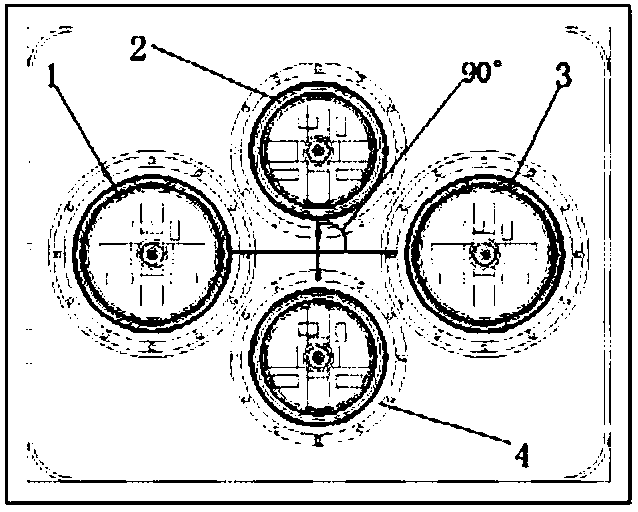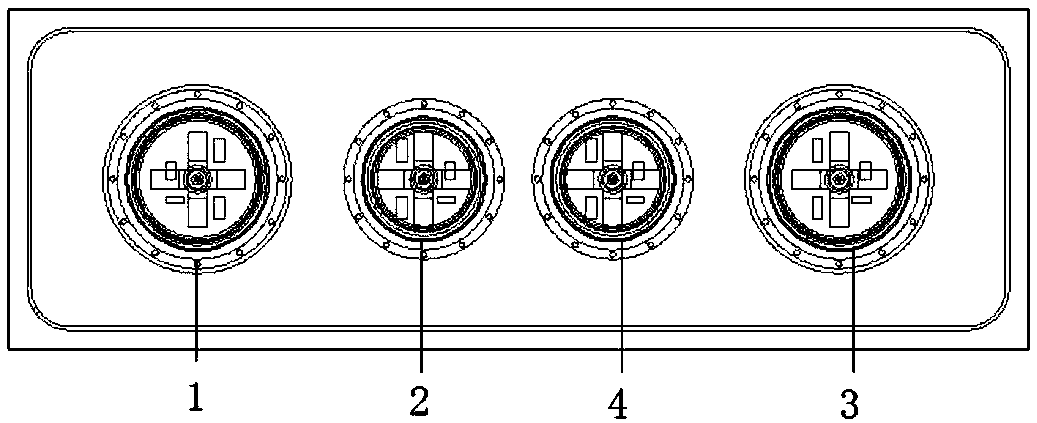Resistance-capacitance composite touch sensor, electronic skin and smart robot
A touch sensor, electronic skin technology, applied in the fields of resistance-capacitance composite touch sensor, electronic skin and intelligent robots, can solve the problems of poor anti-interference ability, loss of classification recognition, low sensitivity, etc., to avoid crosstalk and improve anti-interference ability. Effect
- Summary
- Abstract
- Description
- Claims
- Application Information
AI Technical Summary
Problems solved by technology
Method used
Image
Examples
Embodiment 1
[0079] In this embodiment, the detection unit used to detect the three-dimensional force inside the multifunctional layer is a parallel plate capacitor.
[0080] The parallel plate capacitor structures inside the four multifunctional layers on each sensor unit are the same. For simplicity of description, only the internal structure of the first multifunctional layer 1 is used as an example for illustration.
[0081] Such as Figure 15 , 16 , 21, and 22, the upper cross-shaped common electrode 6 of the first multifunctional layer 1 forms four parallel plate capacitors C3, C4, C5, and C6 with the four rectangular independent electrodes 7 corresponding to the lower layer, and the second multifunctional The upper cross-shaped common electrode 6 of layer 2 forms four parallel plate capacitors C7, C8, C9, and C10 with the four rectangular independent electrodes 7 corresponding to the lower layer respectively, and the upper cross-shaped common electrode 6 of the third multifunctiona...
Embodiment 2
[0101] In this embodiment, the detection unit used to detect the three-dimensional force inside the multifunctional layer is a piezoresistor.
[0102] Such as Figure 23-26 As shown, the structure and function of the multifunctional layer are the same as those of the multifunctional layer in Example 1. However, the structure used to measure the three-dimensional force inside the multifunctional layer is changed from a parallel plate capacitor to a piezoresistor, and the internal electrode structure of the multifunctional layer remains unchanged, but four are added between the upper cross-shaped common electrode 6 and the lower rectangular independent electrode 7 The rectangular flexible varistor 21, the upper cross-shaped common electrode 6 and the lower 4 rectangular independent electrodes are used as the two poles of the varistor 21. When subjected to a normal force, the four varistors 21 are subjected to the same deformation pressure. In the case of axial force and sliding...
PUM
| Property | Measurement | Unit |
|---|---|---|
| thickness | aaaaa | aaaaa |
Abstract
Description
Claims
Application Information
 Login to View More
Login to View More - R&D
- Intellectual Property
- Life Sciences
- Materials
- Tech Scout
- Unparalleled Data Quality
- Higher Quality Content
- 60% Fewer Hallucinations
Browse by: Latest US Patents, China's latest patents, Technical Efficacy Thesaurus, Application Domain, Technology Topic, Popular Technical Reports.
© 2025 PatSnap. All rights reserved.Legal|Privacy policy|Modern Slavery Act Transparency Statement|Sitemap|About US| Contact US: help@patsnap.com



